Forms of life and strange identities
- “Trebiñu is Araba and Orduña, why not?” someone may ask. In the Middle Ages, Orduña was part of the Alavés municipality of Busturia. Why did he stay in Bizkaia and not in Álava? In the Basque Country there are three enclaves: Treviño, Orduña and Villaverde de Trucíos. The slaves are three more: Ezkoze, Yeztaze and Petilla Aragón. What do the neighbors in these enclaves and slaves feel and how do they live?

Enclaves and slaves are a consequence of the evolution of the history of countries. Some are of the opinion that they have been completed by convenience.
The current territorial organization of the Kingdom of Spain is very conservative. However, he assured that he respected the divisions of the old law. When the provinces were formed, they took into account the ancient territory. In the French Republic, however, they did the opposite. Since the revolution, the territorial division was renewed, a strong political structure was established in the Department. Most of the inhabitants of southern Euskal Herria enthusiastically criticize the centralism of the Spanish State, in a tremendous centralist involution that we are currently experiencing, but French centralism is huge.
The 1978 Constitution of the Spanish State respected in itself the enclaves and slaves of history. For example: Petilla is the slavery of Aragon. As a curiosity, the Aragonés-Navarro doctor Santiago Ramón y Cajal was from Petilla. He felt Aragonese, not Navarro. It is an example of contradictions around the identity that emerged in these territories. Apparently, in the City of Pamplona it was debated whether, after the transition, a street was to be given to Ramón y Cajal. All the political parties voted against, from right to left, the Spaniards to the Basque nationalists, because they did not feel like Navarro.
The economy is the one that commands the evolution of history. And some say that the maxim is imposed that “this territory has this identity, because we say it”. “The people of Treviño want to be Alaveses, because it is better to be Alavese than bourgeois, the people of Orduña look better in Bizkaia than in Álava.” What do those expressions really have?
Treviño County (Summer Enclave)
Trebiñu is the largest and most known territory of all enclaves, also called Uda. It is an enclave of Álava, whose administration corresponds to the province of Burgos (Autonomous Community of Castilla y León). The Enclave consists of two municipalities: Treviño and La Puebla de Arganzón. The Kingdom of Castile conquered Álava by force in 1200 urtean.Henrike The II of Castile donated Treviño and its territories to Count Pedro Manrique Lara in 1366, when the Brotherhood of Álava was founded in 1463, Treviño was left out and joined Burgos since the end of the 16th century.
M. Elena Ramirez, Mayor
of Treviño:
“The relations are very hard, the Castilian do not want Treviño to be Álava”
Throughout history, the authorities of the enclave have made numerous requests for entry from Treviño to Álava. From the 20th century on, the inhabitants of the area want to join the territory with Álava. In addition to the country’s main political parties (pp, EH Bildu or PNV), the independent groups have the most weight in the government. Citizens of Treviño County (CDC) Mayor Elena Ramírez Izquierdo: “We are within the territory of Álava. We are linked to social, work and family life. Most of us, by definition, feel Alaveses.” In his words, be it ideology, be it logical, everyone stands for it. The pp of Álava also defends the Arabic of Treviño. The Summer Season is considered by all as part of Álava.
Castilla y León tells us about relations with the Autonomous Community: Ramirez “Relationships are very hard. The Castellanos do not want Treviño to be part of Álava, they think we want to take away part of their territory. They are not aware of the social reality here. Our daily life is not oriented towards Burgos, but towards Álava.”
The mayor tells us that everything that is planned in the municipality of Treviño looks at it with magnifying glass, to the point that on many occasions municipal agreements have to be reversed: be they services, transport, agriculture or education. For example, once primary and school studies have been passed, students go to Vitoria to study. Taxes are levied on the Autonomous Community of Castile and León: “As the Children’s School is in charge of us, we adapt to conduct the negotiations with the Junta de Castilla with precision and care.” In the field of health they have no problems. They have reached a framework agreement with the Basque Government, as they have outpatient clinics in the municipality. Medical specialists in Vitoria.
The solution to this problem would be to hold a referendum: “We should encourage debate in the Spanish Congress, or change the provincial boundaries by means of an Organic Law. Otherwise, an enclave law should be created or a new limit law should be drafted. As a municipality we do not have the capacity to influence the issue strongly. However, we asked the Alavese political parties,” the mayor told us.
Municipality of Arganzon
In the municipal elections of 2007, the Nueva Puebla Independent Group (AINP) obtained three of the municipality's seven councilors. The mayor, Roberto Ortiz Urbina, belongs to this group. The previous Independent Group Puebla de Arganzón, by Alfredo Oraá, obtained two councilors, one for EAE-ANV and the other for PP. Then, except for the councilman of pp, the other councilors were in favour of the integration of Treviño in Álava.
Oh my God! ORTIZ DE URBINA, Mayor of La Puebla de Arganzón:
“The new generations are by themselves alavesas and Euskaldunes”
As a result of the election results of May 22, 2011, Roberto Ortiz de Urbina was re-elected mayor of the AINP, with six councilors, one for pp. On 8 March 2013, by popular vote, the municipal plenary requested the segregation of Burgos and the beginning of the formalities for entry to Álava, with five votes in favour and one abstention. Since 2015, PNV and EH Bildu have a councilor and AINP has six. “Most of us are Alaveses, the territory is united to Álava, Burgos is a foreign country for the majority.”
The ikastola of La Puebla de Arganzón organized the festival of the Araba Euskaraz three times. Last time on 17 June, with great success: “The new generations are themselves alavesas and Euskaldunes.”
We have also asked Roberto Ortiz de Urbina about the relations of the Junta de Castilla y León: "They don't want relationships. Our demand for integration in Álava is permanent. Since 1977 we have carried out cultural development, transportation, health in Álava. We are in Álava for work or school reasons. People want simplicity, people sign up in Álava, especially in Vitoria. This case does not affect so much the votes of the parties, which voted against. People make politics, and if there is not a very wrong policy, this issue goes beyond the political activity of municipal groups.”
The mayors of Treviño and La Puebla de Arganzón are considered neighbors of the town. The enclave consists of the two municipalities that act together, both of which are independent. Ortiz de Urbina and Ramírez join in making politics. Relations with the Junta de Castilla y León are dealt with separately and are prepared to share the resources provided by the Castilians: “However, the issue of enclave is not linked to economic resources. The case has become a symbol. The public should be asked about the case.”
I. ARBAIZA DE AGINAGA, Mayor of Orduña
“Our identity is, without a doubt, Vizcain. In addition, we are proud to be the only city name in Bizkaia”
The municipalities also have other preocupaciones.Muchas people living in Vitoria-Gasteiz have occupied their second home at the Summer Fair: “Over the past 30 years, a lot of people have come to live outside. That's a problem. We have to deal with budgets in the same amount, even though the new tenants pay taxes, the proceeds are not enough. The Junta de Castilla y León does not assume the costs of new registered candidates. Anyway, we don’t bring anything to Burgos, we don’t take anything away,” says the mayor of La Puebla de Arganzón.
And Treviño's says: “We have to push the country forward. In 30 years the situation has changed radically, the new generations have increasingly joined the Basque and Alavesa identity. We would like to give a solution to the problem, but the political situation does not help, there is nothing more to do with the political situation in the CAV, in Navarra and in Catalonia. There is no peace of mind for it.”
Orduña
Orduña is the enclave of Álava, the slave of Bizkaia, managed by Vizcaínos and Vizcaínas. It is the southernmost municipality of Bizkaia. Located in the Valle del Nervión, surrounded by Alavese and Burgese lands, it can also be considered, for geographical reasons, a municipality in the region of Ayala de Álava. Orduña is the only population nucleus in Bizkaia with the title of city.
EH Mayor Bildu Idoia Aginako Arbaiza speaks like this: “Our identity is, without a doubt, Vizcain. In addition, we are proud to be the only city name in Bizkaia. On the contrary, the location of the people is not easy, having Bizkaia away is an obstacle to relations.”
J. PÉREZ AGUIRRE, Mayor of Villaverde Turtzioz
“Young people are
coming closer and closer to Bizkaia”
We told him that if to feel Biscayan Bizkaia was not for the strength of the province: “Not at all. Considering the population we are the 95 people of Bizkaia, and in Álava we would be the 5. In the influence of the economy, we would be more showy. It wouldn't make us worse to be Álava. For example, in recent years we have had incidents with the administrations of Bizkaia and Álava for the repair of the A-625”.
The inhabitants of Orduña are 4,163 and every day there are 1,000 vehicles that move to Amurrio to go to work about ten kilometres from the village. The Mercedes factory is located in Amurrio, among others: “We have lived a great danger in the last two decades, twenty accidental deaths have been. It is about to make a solid road project, the Foral Government of Bizkaia has complied with the word, but Álava has not yet done so. The biggest drawback is that this is a bad road. The industry has not developed properly in Orduña and that is a major obstacle in the twenty-first century”.
The election results of 22 May 2011 resulted in the election of Karlos Arranz as Mayor of Orduña. In the 2015 municipal elections, Euskal Herria Bildu, the successor of Bildu, maintained his six councilors, the PNV achieved one more (five in total) and lost the only councilman who had the pp. As a result of these results, Idoia Aginako Arbaiza of the EH Bildu coalition was elected mayor of the Navarra locality. The mayor tells us about identity. “In the City Hall we are representatives of all ideologies, and we have all become Biscayan. He has ruled the PNV for more than 30 years, with the Abertzale left in opposition and the PSOE and the PP have also had representation.”
In the enclaves there are usually subkeys. El de Orduña is La Cerca de Villano. It's Burgos. It is 5,000 square meters and is located in Álava. Those who dominated the pastures of the area stopped working long ago. The subkey is Orduña: "On one occasion the Bizkaia pp asked for the use of the pastures, but they denied it. The PP, among other things, wanted that if a child was born on that land, it would be an urduño”. The case is not of great importance in itself, but the port of Orduña has for years been the main point of access from Euskal Herria to Castile. Orduña is the public property of many mountains. Within the municipality of Orduña are the councils of Belandia, Lendoñobeiti, Lendoñogoiti and Mendeika. Orduña is the only municipality in Bizkaia that has administrative villages within its limits.
The children of Orduña have been in public school in model D for more than twenty years. 27 at the public school and 10 at the concerted religious school. There are no ikastolas. Compulsory Primary and Secondary Education are taught at the Institute of Amurrio, in Álava. Your doctor is in Amurrio. For its part, emergencies and hospitalizations have been carried out in Basauri and Galdakao. The theme of the Church does so with Álava. The prefix of the phone is 945, from Álava: “It’s true, for some it’s not so clear where we are from. Where are you from? They ask us. “How would you live if you were Alavés?” he asked. “I don’t know. In the General Meetings of Álava they welcome us very well. The Alaveses do not regard Orduña as a lost territory.”
Villaverde de Trucíos
Villaverde is officially Valle de Villaverde. Location of Cantabria in the Basque Country It is a natural enclave of Bizkaia, so it is usually considered as the Basque Country, specifically of the Basque Country of Encartación. Enclave biscayan, but administratively from the province of Cantabria. Beware! We must not confuse it with the people of Trucíos in Bizkaia.
Javier Pérez Aguirre is the mayor of Villaverde de Turtzioz. Natural from Zarautz, is 31 years old. Elected from the Regionalist Party of Cantabria (PRC). Independent: “We are Cantabrians, because Hacienda is in Cantabria. The truth is that we would like to be of Bizkaia administratively. Because the Education and Health services are agreed with Bizkaia.”
DANIEL VIGNEAU Mayor
of Ezkoz
“We are delighted, we do not turn our backs on the Basque, but we are not from Euskal Herria”
Javier Pérez Aguirre still does not give up being Cantabrian: “No opinion survey has been conducted at any time. When the annexation was attempted after the Transition, I was not born. My generation is not Biscay. The PRC is a Cantabrian party. Young people are coming closer and closer to Bizkaia.”
PRC has six representatives and pp, one at the Casa Consistorial. Miguel Ángel Llaguno Altolachipi was mayor of the town for a long time. “The mayor and the soul of the people. It was close to the PNV, in a way to its ideas. Regionalist”.
In Villaverde Turtzioz, children from 2 to 12 years old are studied. Then they go to Balmaseda. They study in the Basque model: “Young people have learned Euskera in school, but in the Commissions the Basque language is not a living language, and here they do not use it. In addition, there are few. However, their identity tends towards the Biscayan people. In Las Encartación the trend in favor of Athletic Club is impressive. With the Santander, on the contrary, it is not so foamy, so the young people live looking to Bilbao”.
90% of health surveillance is provided in Bizkaia. There's no public transportation. They say it's not viable. There is no trade. You can catch the train 20 kilometers away. They usually go to Castro, but they buy in Bizkaia: “The interests of joining Bizkaia are always there, we have a good relationship, but while the PRC is in the government of Cantabria, we are OK, because it defends the interests of the citizens.”
The president of PRC of Cantabria, Miguel Ángel Revilla, is also the deputy for Bizkaia. They are governing next to the PSOE: "When pp was in government, the leave was total for us. We were cut off from aid. We're about 290 people. If they do not govern us well, there are citizens who register in other municipalities. Please note that our village has 20 square kilometres, 70 per cent of which is mountain.”
Slaves
In Iparralde there are two slaves, Ezkoze and Jeztaze, both in Bearne. He is a slave from Lower Scotland and Jeztaze from Zuberoa. Interestingly, in Wikipedia, in Basque, Ezkoze appears as a town in the Basque Country, in French from Bearne. Ezkoze and Jeztaze are outside the Commonwealth of Iparralde.
Ezkoze
Daniel Vigneau is the mayor of Ezkoz: “Ezkoze was historically from Navarra, but today it is not. We are located in the Bearn de Gaves Commonwealth, and we feel mostly bearnes.” The most related cities are Oloroe and Pau: “We are delighted, we do not turn our backs on the Basque, but we are not from Euskal Herria.”
Maryvonne Lagaronne, Mayor of Yeztaz:
“The Frenchman is the one who has educated us the most.”
On the possibility of membership of the Single Commonwealth of Iparralde, it reads as follows: “There has been no request from the elects of the Consistorial House, nor from the citizens. The economic link with the Basques we have especially through the forest, we share land, each citizen has the right to exploit wood depending on the size of the farm”.
They have the Donapaleu of Baja Navarra 15 kilometres away, they have relations with the local market, but nothing else. They relate to the peoples of Saliese or Peirahorada: “It is the natural evolution of identity, as long as ideology does not enter. In the 19th century ideology commands or decides. When Henry IV was married from Navarre we became part of Bearn, we left Navarre. We are all, some more Basque, some more bearneses, more tender, as we have said, but in the end I would say that we are gascones.”
Ordeño
It's the slavery of Jeztaze Zuberoa. He has stayed outside the Basque College of Ipar Euskal Herria. Maryvonne Lagaronne, the mayor and labrador, says: “I have a Zuberotarra father and a Bearnese mother, and I am a charm. Jeztaze is a border crossing between neighbouring territories. We are on the Camino de Santiago. Bridges have made it possible to be on both sides, so we say we're thrilled. We have lost the Basque and the Bearnés, we are a mixture of two cultures. The Frenchman is the predominant, that is how we have been educated. In the houses and in the mountains the characteristics of both cultures are evident. In the past we were from the canton of Donapaleu, today we are in the rebirth of Oloro.”
It's curious, they have relationships with the gendarmerie in Donapaleu. Like Ezkoze, Bearn de Gaves are in the Commonwealth: “However, we have direct contacts with the Zuberoa trade union and/or the services. With Maule we deal with the water problems, and also with the mountain problems with the institutions of the Basque Country. At the same time, we are very united with the Savior of Bearn, with whom we have rapid relations. We are 91 neighbours and want to maintain cultural relations with Euskal Herria. We feel part of Euskal Herria even if we are out. Our children and young people are schooled in Donapaleu and Maule. Therefore, we do not deny the relationship and necessity with Euskal Herria”.
We have asked you about the possibility of membership of the Single Commonwealth of Iparralde: “We don’t want to be in this great project, in the current community we’re fine. It is better that we are in a small interurban community, not the big one, which is going to become a big metropolis. In our case, it is not a matter of parties or ideologies, but of who offers us a better quality of life. In the Basque territory, however, we do not feel denied. In Zuberoa there are many small towns and they demand the transportation, roads, water and services of well-served boats, we too.”
Esquiula
On the other hand, the people of Eskiula stand out. It's not an enclave, it's a special village. The shale has never been Zuberoa, but Bearno. Maryse Artigau is the mayor. We have spoken to your secretary: “We are Basque, but we are close to Oloron, six kilometers away, half the population works there, all the services are there. Wholeheartedly, we are Basques, we have a quick identity.”
The base of life and the valley is on Bearne. It was a question to enter the Basque College, but the City Hall said no: "There have been no problems. There is good stability and success in Eskiula, as we live today we are well.”
Petilla Aragón
Petilla Aragón is a municipality located in the merinity of Sangüesa, in the province of Zaragoza, in the region of Cinco Villas. It's a small town of 35 people.
F. AGUAS ARILLA, Mayor of Petilla Aragón:
“We have the influence of many languages. The words of Aragon, Bera and Yesa and the Basque words also appear in our language. But they've been losing out."
Slavery of Navarra in Aragon. Florentino Aguas Arilla has been mayor since 2015 on behalf of the Petilla de Aragón Group. The Corporation has two Mayors and Councillors: “The petilla has no particularity, in reality there is no problem, on the part of the administration we are from Navarra, we have all the services, the water and the garbage, the doctor and the church insured”.
It's a town hall in Navarre since 1231. Neighbour of the Sangüesa Commonwealth: “The Petillarros have a good relationship with everyone. In the pastures of Bastanes – subkey – we work cereal and power or fodder for cattle. There is the hermitage of San Antonino.Es the estate that belongs to the petilla, and there we meet every year in pilgrimage.”
There is no school and depopulation is a problem of the future, total eviction. The children are going to study in Sangüesa. Asked about the language: “We have the influence of many languages. The words of Aragon, Bera and Yesa and the Basque words also appear in our language. But they've been losing out."
Asked about Santiago Ramón y Cajal, whether he was Navarro or Aragonese...: “I don’t know anything about this. Anyway, in the Plaza del Hospital Virgen del Camino de Pamplona there is a bust and a street in its name.”
Euskal herrialdeetako mugak errege-erreginek eta jaun-andreek ezarri zituzten Erdi Aroan. Hein batean artifizialak dira: Eskiula euskalduna beti Bearno izan da eta Ozaraine-Erribareita gaskoiduna, Zuberoa. Enklabe-esklabeek ziriari zotza sartzen diote.
Ustez feudalismoaren hondarrekin bukatzearren, 1790ean Frantziako iraultzaileek Pirinio Behereetako Departamendua sortu zuten. Orduz geroztik, Lapurdi, Baxenabarre eta Zuberoa ez dira ofizialki existitu. Haien esklabeak ere ez: Ezkoze (Baxenabarrerena) eta Jeztaze (Zuberoarena), biak Bearnon. Iaz Ipar Euskal Herriko Hirigune Elkargoa osatu zen. Elkargoak hiru herrialdeak bildu ditu, baita Baiona eta Bidaxune ere, Lege Zaharraren garaian beregainak zirenak. Gainera, Gaskoinia zein Bearnoko bost udalerri sartu dituzte bertan: Bokale, Samatze, Akamarre, Erango eta Lixoze. Bi esklabeak kanpo gelditu dira.
Espainian ere departamenduak proposatu zituen baten batek (Matxitxako eta Bidasoa, gure kasuan). Alferrik. 1833an, probintziak sortu zituztenean, Hego Euskal Herriko lauretako mugak hain hertsiki errespetatu zituzten, ezen enklabe eta esklabe guztiak bere horretan utzi baitzituzten.
1840tik goiti zazpi kuadrillak osatu dute Araba: Gasteizek, Agurainek, Aiarak, Guardiak, Zuiak, Mendozak eta Añanak. 1996an Zortzigarrena Fundazioa eratu zen, Uda, Gaztelaren esklabea (Landazurik halaxe, “Uda”, zeritzon XVIII. mendean Trebiñuri; ez dakit zergatik ez duen onetsi toki-izen hori Euskaltzaindiak), Arabako zortzigarren kuadrilla bihurtzeko asmoz, udatar gehienek sostengaturik. Urduñan ez da inoiz antzeko mugimendurik izan Bizkaiaren esklabea bederatzigarren kuadrilla bilakatzeko. Eta, dakidala, inori ez zaio oraindik bururatu Arabako Busturia berreraikitzea, Aiarako Kuadrillaren barruan, Urduñaz eta Amurrioko mugapeko Delika, Artomaña, Aloria eta Tertanga herriez.
Enkartazioetan Billaberde dago, nahiz eta 1440tik goiti Gaztelako Erresumarena izan, gero Sanandereko Probintziarena eta, gaur egun, Kantabriako Autonomia Erkidegoarena. Hemen ez da liskarrik. XIX. mendean Trueba enkartaua izan zen enklabearen bizkaitartasuna aldarrikatu duen bakanetakoa.
Petri II.a Aragoiko erregeak Antso Azkarrarekin jokaturiko karta partida batean galdu omen zuen Petilla. Bertako bizilagunak nafar sentitzen dira. Batzuk euskal herritar ere bai. Salbuespen sonatuena Ramón y Cajal Nobel sariduna izan zen. Haren aragoitartasuna zela eta, zenbait zinegotzik haren izena ukatu nahi izan zioten Iruñeko kale bati.
Feudalismoa arroka gogorra gertatu da gurean.
Xabier Zabaltza
Historialaria
ERREALITATEAREN HARRIBITXIAK
Nork: Josu Iriarte, Nerea Lizarralde, Jare Torralba eta Amets Larralde. Mikel Martinezek zuzenduta eta Jokin Oregiren testuetatik abiatuta.
Noiz: otsailaren 21ean.
Non: Bilboko 7katu... [+]
15 urteko emakume bati egin dio eraso Izarra klubean jarduten zuen pilota entrenatzaile batek.
Nafarroako Gobernuak ofizialki aitortu ditu gure lurraldean giza eskubideen urraketa larriak jasan zituzten Estatuaren indarkeriaren beste zazpi biktima. Horien artean, hitzez hitz “motibazio politikoko biktima gisa” aitortzen ditu Patxi Erdozain, Eneko Compains,... [+]
Donostiako alkate ohiak webgune bat sortu du, eta plataformarekin bat egiteko eskatu die herritarrei.
PuntuEus-ek doako tresna erabilgarri bat jarri du edonoren eskura, webguneen segurtasuna erraz ebaluatzeko. Webtest.eus izeneko autoebaluazio-tresna honi esker, erabiltzaileek beren webgunearen segurtasun-maila modu sinple eta argian azter dezakete.
"Historikotzat" jo du otsailaren 27an plazaraturiko epaia Lurraren Altxamenduak sare ekologista antikapitalistak. Bere aldetik, epaiaren "krudelkeria" salatu eta helegitea jarriko duela jakitera eman du Frantziako Estatuak. Duela hogei urte baino gehiago jarri... [+]
Joan den asteartean La Vanguardia-n argitaratutako artikuluan egin zuen proposamena Txema Montero abokatu bizkaitarrak. 30 urtez Deia egunkariko kolaboratzailea izan da eta lehenik hara bidali zuen bere artikulua, baina egunkariak ez zion argitaratu.
Hemendik aurrera egunkarian soilik "norbanakoen askatasuna eta merkatu librea" sustatzen dituzten iritziak jasoko direla adierazi du enpresaburuak. Iritzi artikuluen zuzendariak hedabidea utzi duela ere argitaratu du.
Urteak iragan dira bere azken argazkia ikusi zenetik. 26 urte daramatza preso Abdullah Öçalanek Turkiako Imrali uhartean, "erakunde terroristako" buruzagitza egotzita. Ostegun eguerdian bere bideo bat ez, baina argazki berri bat zabaltzeko baimena eman du... [+]
Elkarteak ekainaren 27, 28 eta 29an Arberatzen (Nafarroa Beherea) izango den jaialdian izateko aurresalmenta abiatu du ostegunean. Hiru eguneko sarrerak 43 euro balioko ditu eta Ipar Euskal Herriko "lau ertzetatik" festibalera hurbiltzeko autobusak antolatuko dituztela... [+]
2024ko laneko ezbeharren txostena aurkeztu dute LAB • ESK • STEILAS • EHNE-etxalde eta HIRU sindikatuek aurtengo otsailean. Emaitza larriak bildu dituzte: geroz eta behargin gehiago hiltzen dira haien lanpostuetan.
AEBek Ukrainako gerraren aurrean egindako jarrera aldaketaren barruan, “lur arraroak” deiturikoak negoziaziorako gai nagusi bilakatu dira Volodymyr Zelenskyren eta Donald Trumpen artean. Lehenak nahi du AEBek bere segurtasuna bermatu dezatela Errusiaren aurrean,... [+]
Asteburua baino lehen lau gatiburen gorpuak itzuliko ditu Hamasek. Horrela, Gazarako su-etenaren lehen faserako adostutako preso truke guztiak gauzatuko dituzte Israelek eta talde palestinarrak.
Lestelle-Betharramgo (Biarno) ikastetxe katolikoko indarkeria eta bortxaketa kasuen salaketek beste ikastetxe katoliko batzuen gainean jarri du fokua. Ipar Euskal Herriari dagokionez, Uztaritzeko San Frantses Xabier kolegioan pairaturiko indarkeria kasuak azaleratu dira... [+]
31 urteko emakume kolonbiarra osasun zentrora eraman ordez ertzain etxera eramatean agenteek "akatsa" egin zutela aitortu du Segurtasun sailburuak, baina azpimarratu du ez zuela "jipoirik" jaso.













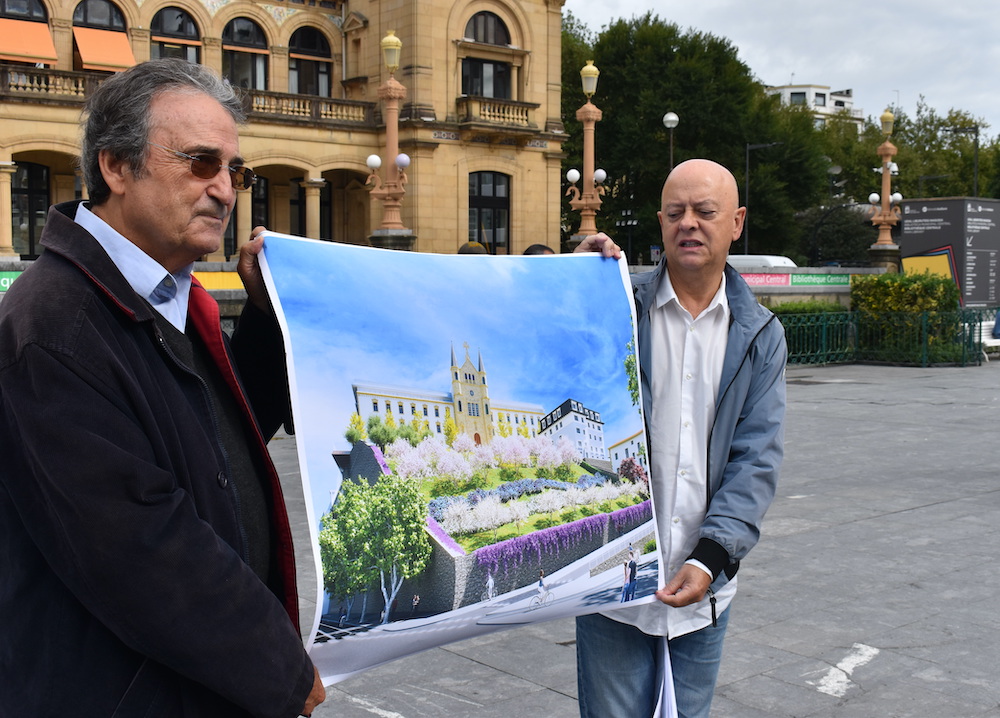
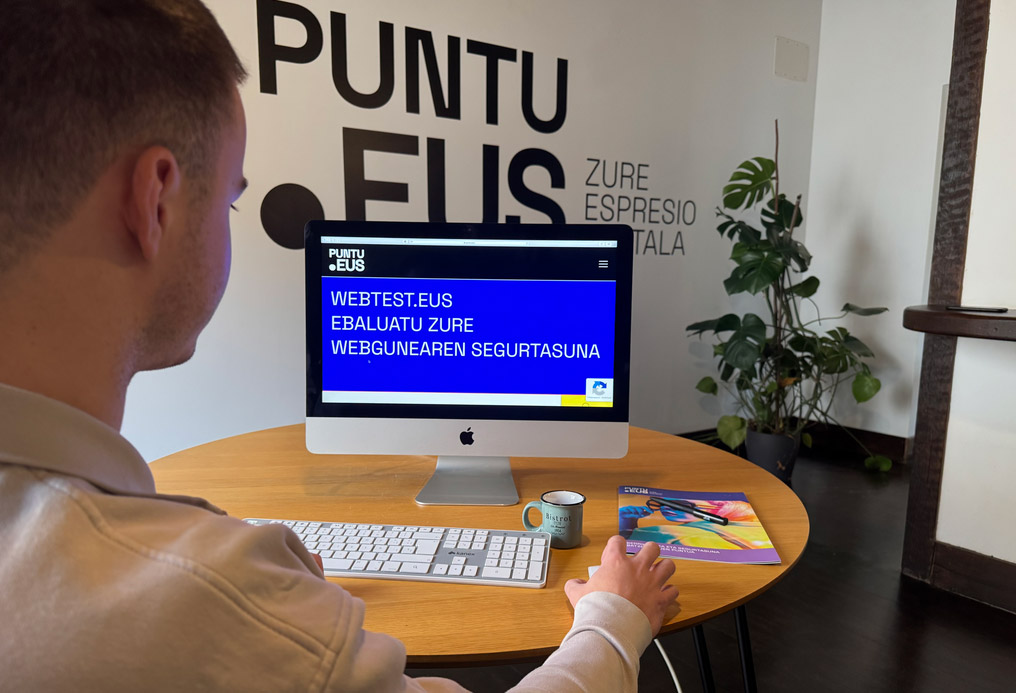
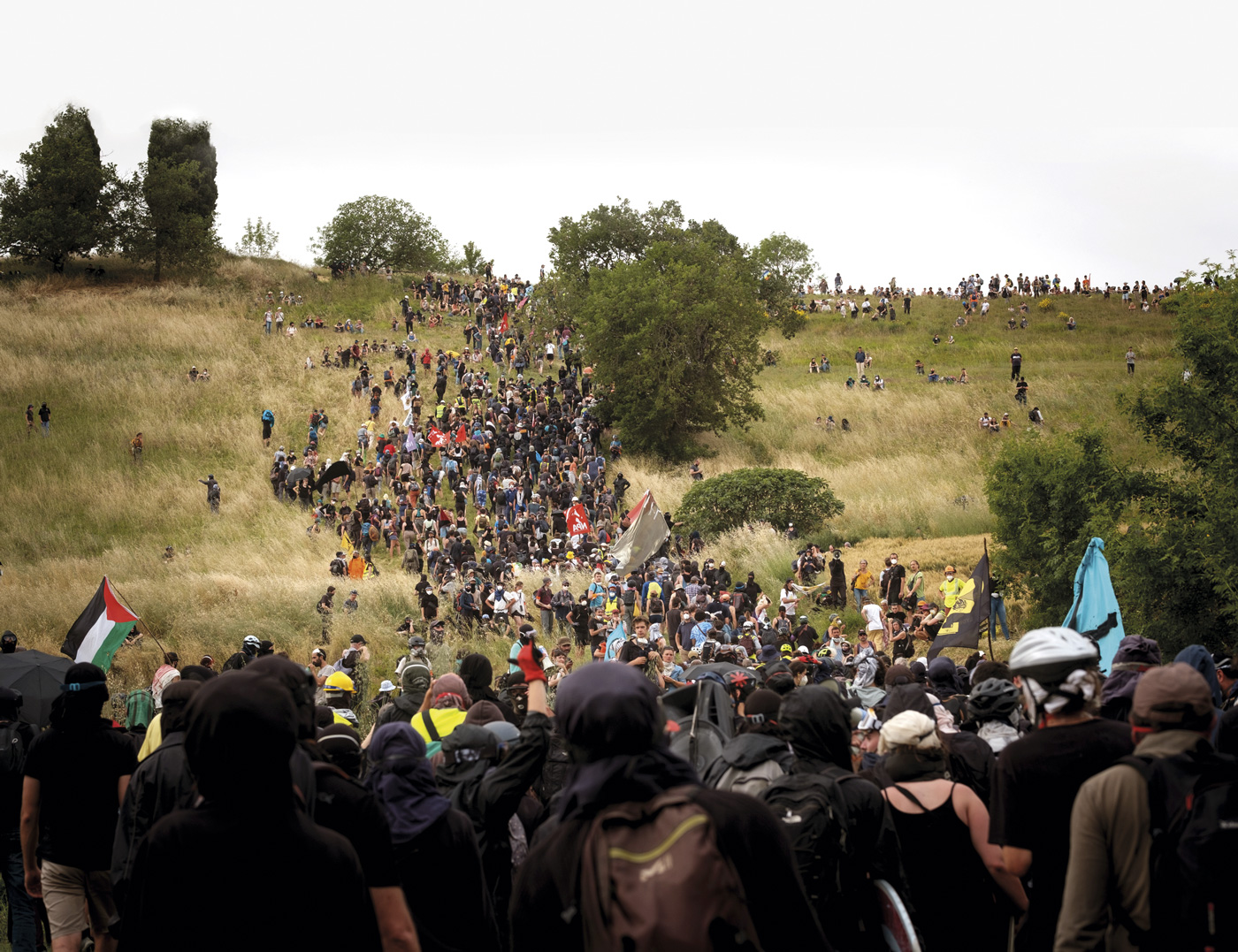
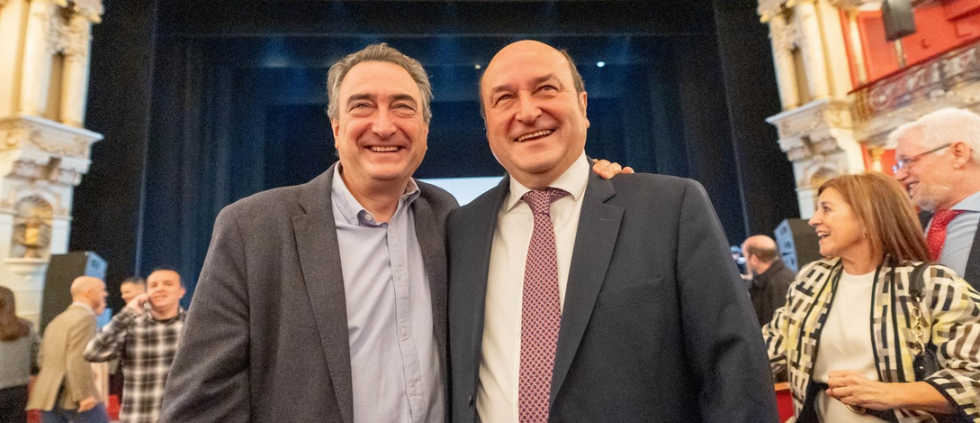

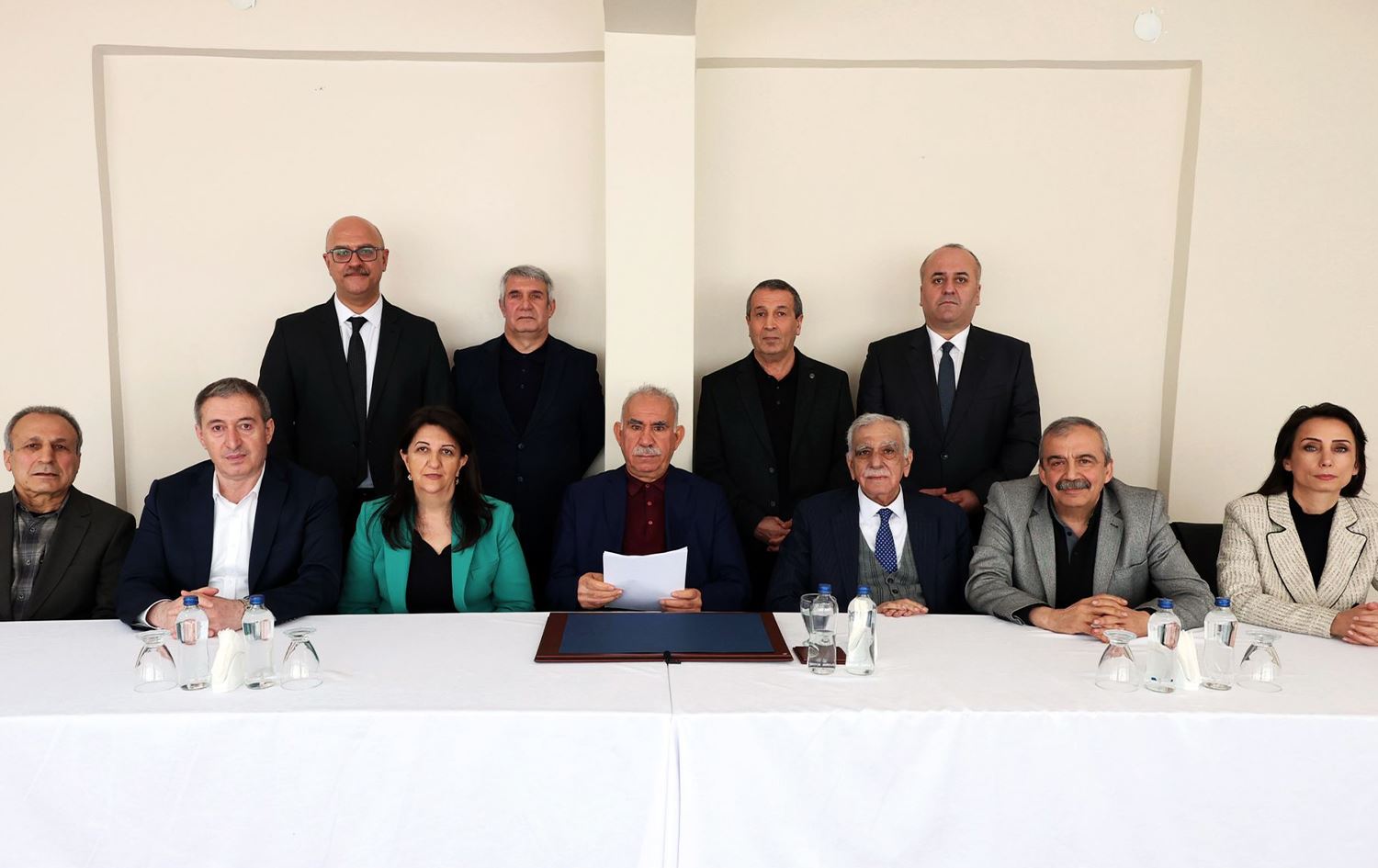
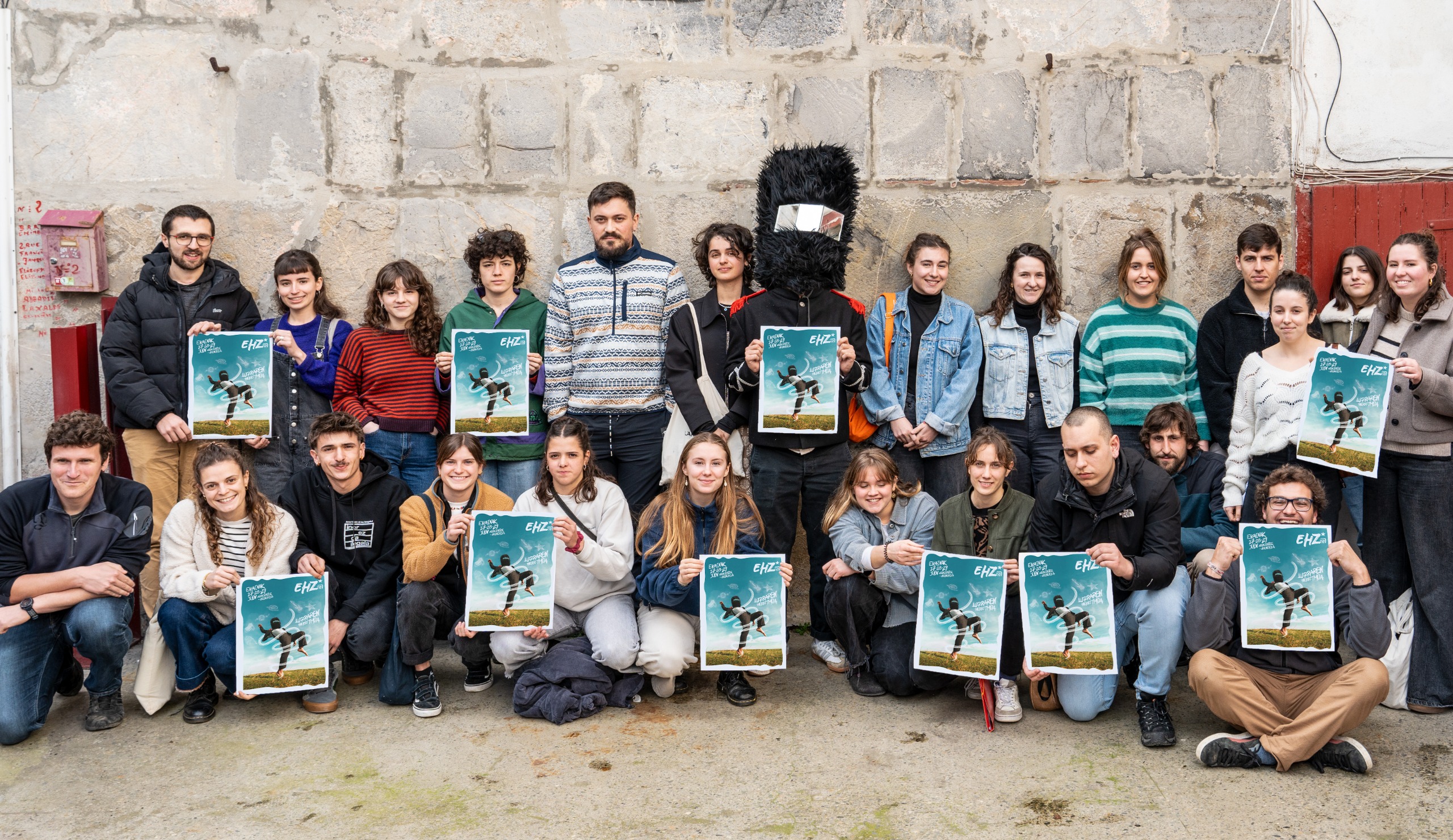
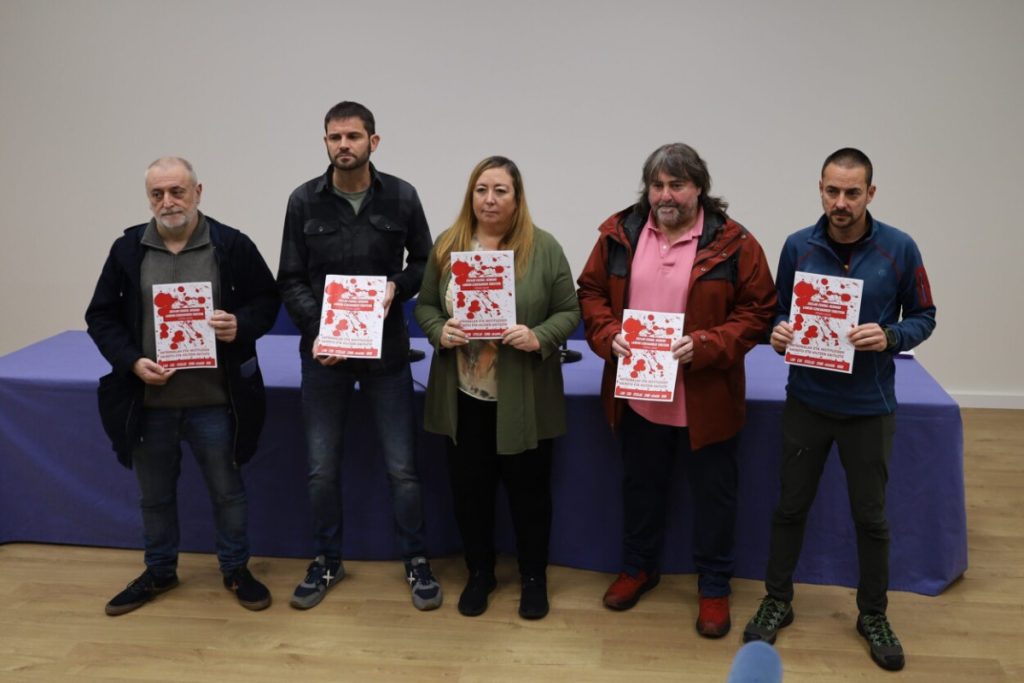


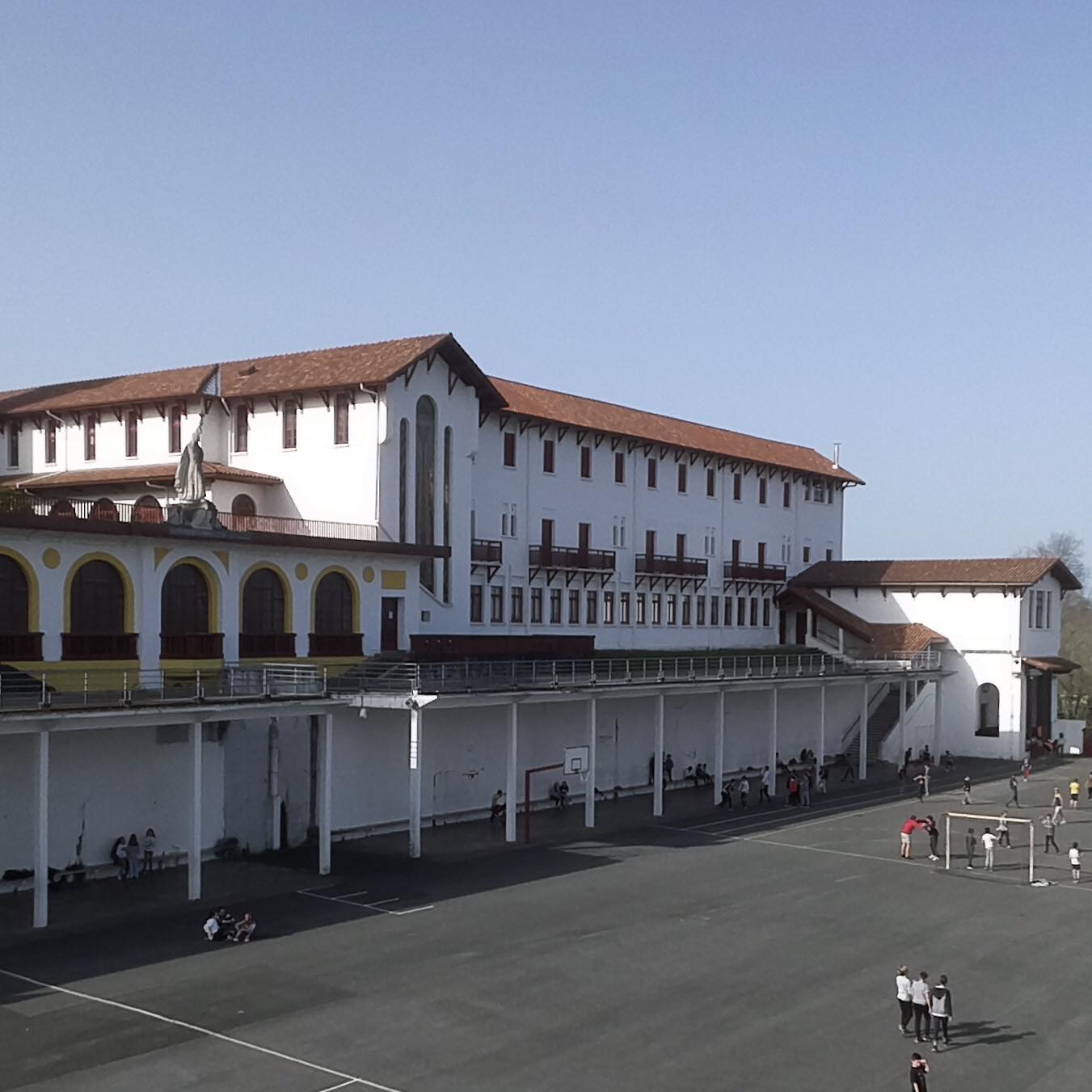
.jpg)